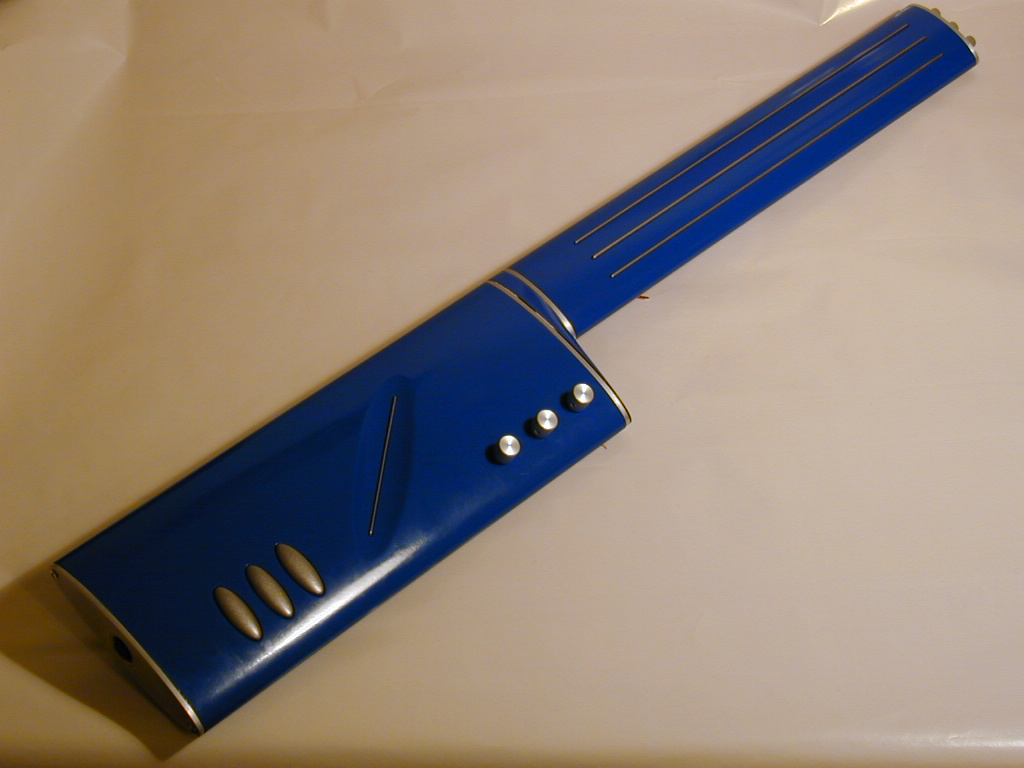This is only a design study and has never been realized!
Although I don't think I will ever do this any more, I have put it into the new site cause it's still beautiful and pretty:
The Filtonium came up by the idea to make again a "real" musical instrument without Midi and without keys or buttons. The soundproduction actually consists from a filter (which gave it the name), which can be excited by various kinds and thus serves as an oscillator, filter and VCA in one thing.
Three of these filters make the Filtonium a trichord, each of which can be played in tonal with the fingers on those metal sticks (sliders) similar to a string of a violin. There is no frets or quantisation! It's up to be played...
The excitation can be played by pressure and velocity sensitive pads on the corpus with three fingers of the right hand.
You can also use the bow function with the middle short slider to bow the filters like a violin string. Herewith, innumerable many shades of musical attacks are possible.
The three knobs adjust the resonance begin, the cross modulation of all three filters and the main volume. Because they don't have to be tweaked that much, they are placed at a less prominent location on the corpus.
The three "string" slider can be tuned individually by the fine trimmers at the end of the neck. Thus, open tunings, unisono, but also classic guitar(4th) or violin (5th) tunings ar possible.
Each slider has an interval of an octave.
The tonal scaling across the way of the slider is "linear" or hyperbolic (1/x) as for a real string instrument, because it is determined by quotients. The whole way is an octave, two thirds a 5th, a quart is a 4th, one third a -3rd etc.
So, to get tonal intervals, one has to play "logarithmic" scales like on the fret grid of a guitar (always the shorter to the corpus). All musicians playing string instruments are very familiar to playing like this, and an intervalwise linear grid (piano) would cause more difficulties and confusion.
With this, the typical exponentializing of the control voltage (like Volt/Octave) is not neccessary and would not cause further inaccuracys and temperature drifts like with normal synth VCOs.
The idea came in 1997, during talks with industrial designer Frank Dellen about the finish designs of AirBase99 and SunSyn. He took my conception and made a design and ergonomic study at the university GH Essen during his his study.
Now he gave me the model with his kind permission, to let this nice concept just be published and not forgotten in our minds.
 ![]() 
|